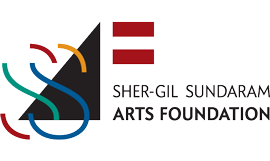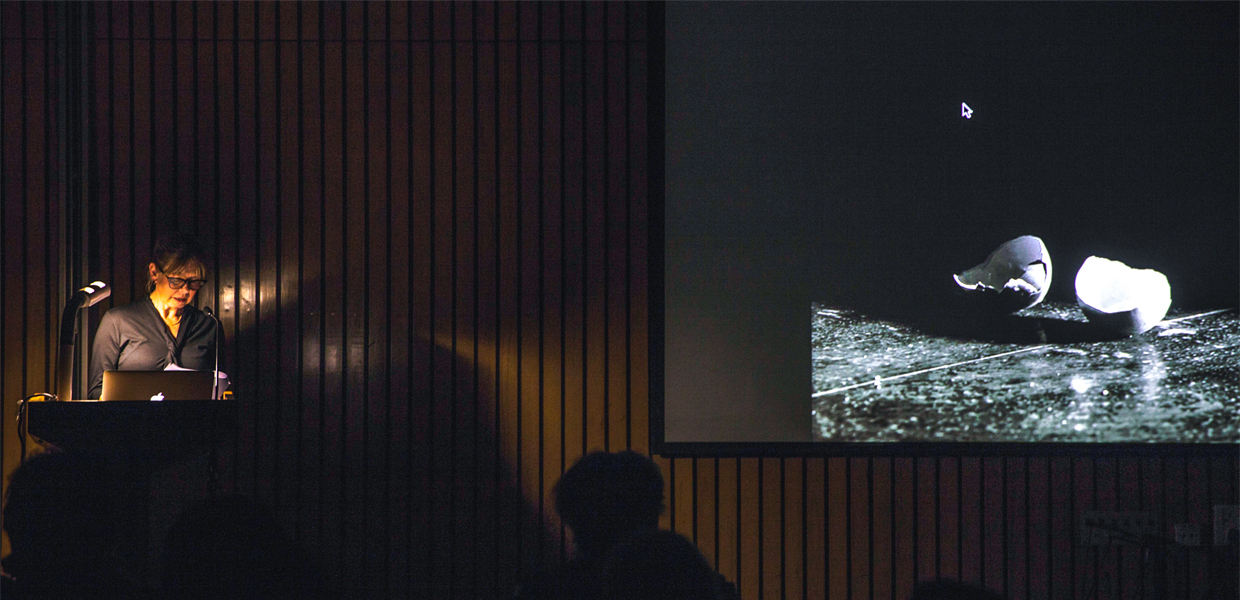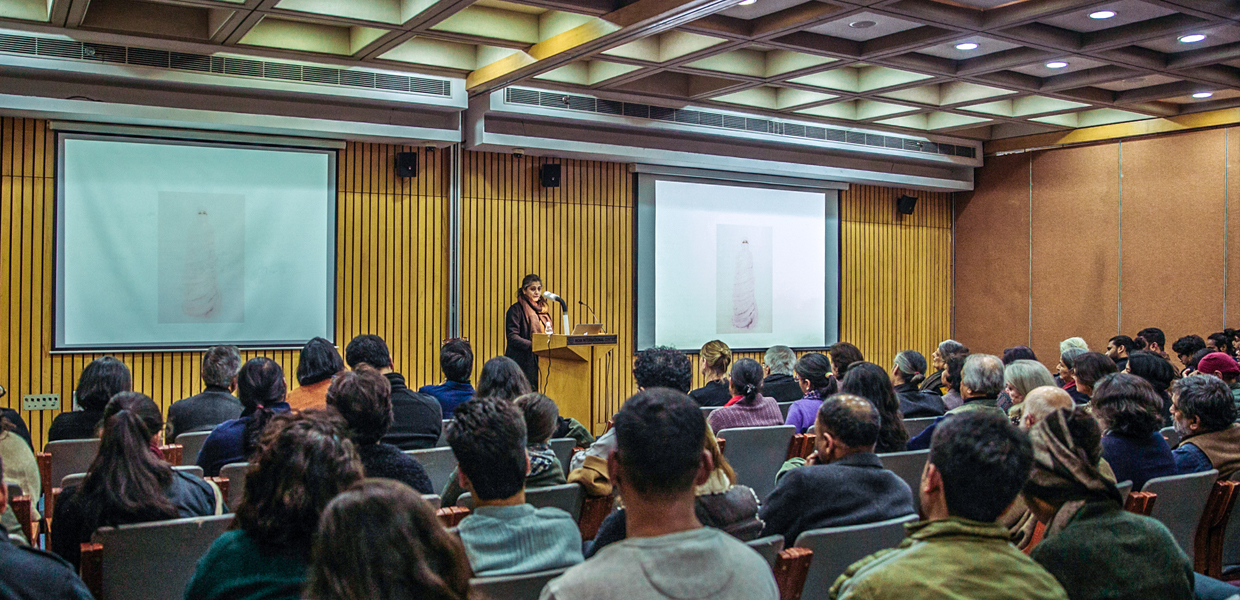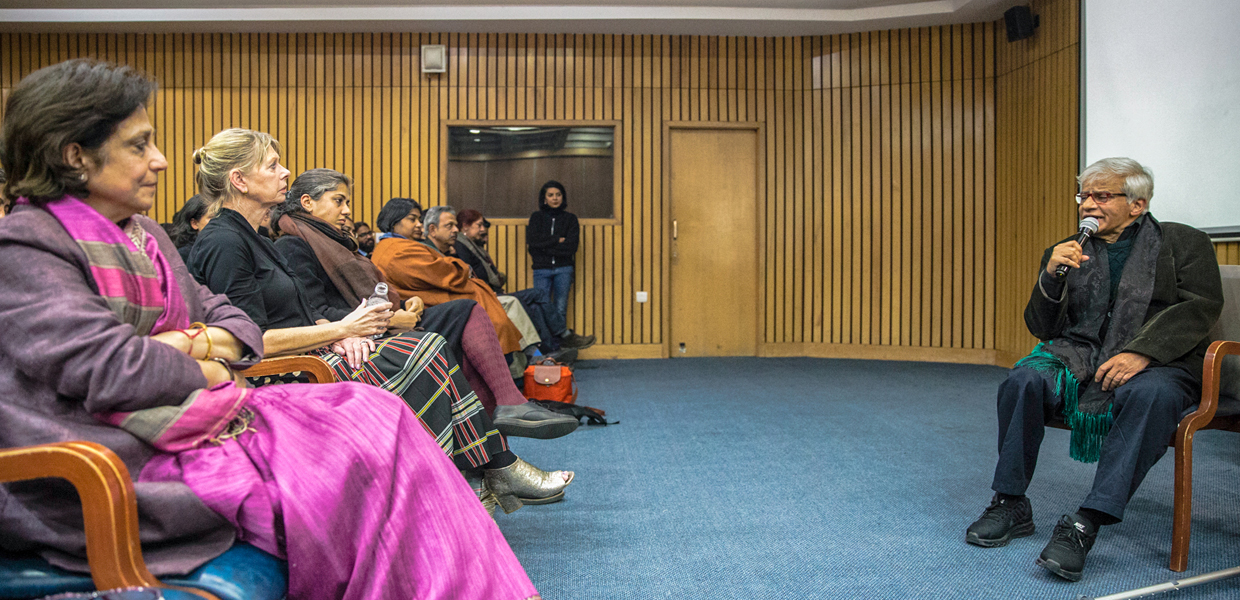Grant Recipient
AISHWARYA ARUMBAKKAM
Title of the Project
KA DIENGIEI (working title)
KA DIENGIEI (working title) allegorically explores repercussions of habitat loss, environmental extraction, and indigenous issues in Shnongshoh (Lama Punji), a Khasi village situated at the border of Bangladesh and India.
Located in the foothills of Meghalaya, but lying in Bangladesh, the village of Shnongshoh was formed by Khasi families who migrated from various villages in southern Meghalaya to the plains of Bangladesh in search of cultivable orchard land. Since the past decade, the village has been subject to rapid changes due to significant sand and stone mining in the area. Large scale mining and stone crushing in the region has led to massive destruction of landscape, loss of habitat, threat to livelihood, scarcity of basic resources such as water, and safety issues. This is accompanied by intangible and arguably more valuable losses such as those of culture, identity, mythology, and a way of life.
Produced in grayscale, this work interweaves local oral histories with a documentary approach to move through intertwined layers of loss and resilience as experienced at Shnongshoh.
The narrative takes the thread of a quest as a child, Arlangki, searches for mythical figures from times past and present whose stories hold valuable lessons about losing and holding onto connections between human, nature, and the divine.
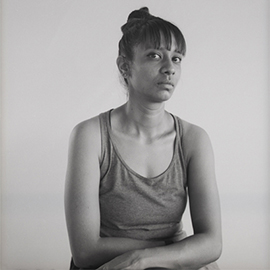
Aishwarya Arumbakkam (b.1988) is a multidisciplinary visual artist who works across photography, filmmaking, and drawing. An artist from Chennai, India she graduated with an MFA in Studio Art from The University of Texas, Austin. She studied at the National Institute of Design, Ahmedabad and at Pathshala, Dhaka. Arumbakkam was honored as one of the ‘Ones to Watch’ by the British Journal of Photography in 2019. In 2020, she was awarded the Magnum Foundation Photography and Social Justice Fellowship. Her work has been exhibited at Testsite, Austin (2023); The South London Gallery (2022); The Visual Arts Center, Austin (2022, 2020); and Ishara Art Foundation, Dubai (2021).
Jury
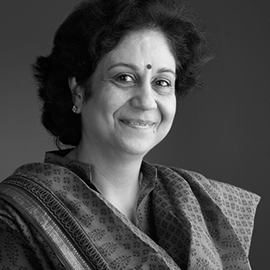
Gayatri Sinha is an art editor, critic and curator. Her primary areas of enquiry are in gender and iconography, media and the study of classical texts. She is the founder of criticalcollective.in, India’s first web based archive and news magazine on art.
As curator she has worked with photography and video art from archival and contemporary sources. Her curatorial projects include: Envisioning Asia: Gandhi and Mao in the Photographs of Walter Bosshard, KNMA, New Delhi 2018; Part Narratives, Bikaner House, New Delhi, Dr. Bhau Daji Lad Museum, Mumbai 2017; Diary Entries, Gallery Espace, 2015; Video Art Programme, Dr. Bhau Daji Lad Museum, Mumbai, 2013-2015; Water in the Musee d’Anselmbourg and the Grand Curtius Museum, Liege, 2013, Ideas of the Sublime, Lalit Kala Akademi, 2013; Cynical Love: Life in the everyday, Kiran Nadar Museum, 2011; Looking Glass: The Existence of Difference (Religare Arts Initiative, Max Mueller Bhavan, British Council), 2010; Constructed Realities, Shanghai, 2010; Failed Plot, KIAF, Seoul, 2009; Public Places, Private Spaces: Contemporary Photography and Video Art in India, The Newark Museum, New Jersey, 2007 and Minneapolis Institute of Arts, 2008; Watching Me Watching India Contemporary photography in India, Fotografie Forum, Frankfurt, 2006; Middle Age Spread: Imaging India 1947 – 2004, National Museum, New Delhi, 2004; Vilas: The Idea of Pleasure, Birla Academy, Mumbai, 2000; Woman/Goddess 1998-2001 (Delhi, Bangalore, Chennai, Kolkata, New York); The Self and the World, Women artists at the National Gallery of Modern Art, 1997.
She has edited Voices of Change: 20 Indian Artists (Marg, 2010), Art and Visual Culture in India 1857- 2007 (Marg Publications, 2009); Indian Art: an Overview (Rupa Books, 2003), Expressions and Evocations Contemporary Women Artists of India (Marg, 1996) and written monographs on Krishen Khanna, Himmat Shah and M F Husain.
She has received research grants from the Ministry of Culture, Government of India and Ford Foundation. She was the recipient of the Tate Asia Research fellowship 2017.

Latika Gupta has worked as a curator at the National Gallery of Modern Art and at KHOJ International Artists’ Association in Delhi, besides curating independent exhibitions of South Asian contemporary art. Her curatorial projects include Homelands: A 21st century story of home, away and all the places in-between drawn from UK’s British Council Collection and Arts Council Collection, that toured Delhi, Mumbai, Bangalore, Kolkata, Colombo, Lahore and Karachi in 2013-2014; Folk Archive by Jeremy Deller and Alan Kane that toured Delhi, Mumbai and Kolkata in 2015, and most recently Jeevanchakra, Kolkata, 2016, as part of the Wellcome Collection’s Medicine Corner project in India.
She has received fellowships from the Nehru Trust, Charles Wallace India Trust and a Museum Fellowship from the India Foundation for the Arts and INLAKS to curate a permanent exhibition for a museum in Kargil, Ladakh. She was recently a research fellow at the School of Oriental and African Studies, London (2017).
Her publications include an essay in the Journal of Ritual Studies, essays in Postdate: Photography and Inherited History in India (University of California Press), Marg Publications and critical reviews in Art India magazine, Take on Art and India Today. Gupta currently works as Associate Editor at MARG publications.
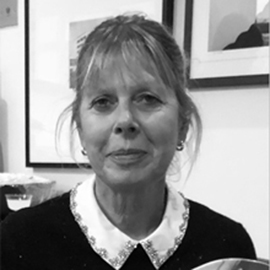
Based in the UK, Zelda Cheatle (Jury Chair) is noted for her longstanding career in establishing photography as art, through sustained work as a curator, lecturer, editor and consultant. After some years taking photographs, she began a gallery career at The Photographers Gallery, London (1982-88) before opening her own gallery, Zelda Cheatle Gallery (1989-2005). For 16 years, her gallery exhibited works by early 20th century maestros of the medium including Eve Arnold, Bernice Abbot, Abbas Kiarostami, André Kertesz, Robert Frank and Bill Brandt, amongst others, while consistently exhibiting and supporting young and emerging artists.
Zelda Cheatle has contributed in building both private and public collections both nationally and internationally. She initiated and managed the first Photography Fund, which exhibited and published a collection over 6000 iconic prints including Eve Arnold’s vintage archive and masterpieces of the European and American schools.
She is a consultant on multiple projects, is on the board of the Koestler Trust and their Arts Committee, has helped create the John Kobal Foundation (now Taylor Wessing at National Portrait Gallery, London), has been advisor to Photo Shanghai (2015), is a nominator for Deutsche Borse and Prix Pictet competitions and an active member of the Academy for World Photography Organisation. She is a visiting lecturer at Central St Martins, Kingston University, University of Ulster Belfast, Sotheby’s Institute, University of Westminster, ‘The Cass’ at Metropolitan University, University of West London, London College of Communication, UAL and Northampton University.
Zelda also curates and lectures internationally, including an advance course for collectors of photography, most recently exhibiting works from the celebrated Cass East End Archive. This includes images by Steven Berkoff and Don McCullin in London, East Wing and West Wing exhibitions, showing the short listed and award winning images at Sony World Photography Awards, Yan Preston Mother River in China and at Three Gorges Museum, Chongqing, Wuhan Art Museum and Swatch Art Peace Hotel Shanghai.
Announcement of Grantee: 27 January 2019
JURY STATEMENT
Gayatri Sinha
This award speaks to the dynamism of photography as a living practice and its links to early performance based arts. It also reaffirms certain fundamental questions around photographic practice on whether or not any subject’s (willing) engagement with the lens is not, a priori, a gesture towards performance.
India is unique in its performative photographic history. As early as the 1850s, the Indian photographer problematized and subverted the notion of the photograph as an instrument of representation, as a record of truth. Instead, the photographic moment of the punctum was viewed as a plane of transgression, one that elided with the truth to represent other possibilities, much like a pleasurable fractal or broken moment in time.
Maharaja Ram Singh II of Jaipur, Narayan Dajee and Umrao Singh Sher-Gil all between 1850 and the early 1900s used performance, construction and elements of collage to arrive at shifting or altered states of identity which can unsettle or amplify the idea of the truth.
The responses to the award are interesting in the new areas that they chart. They mark for instance the a great hiatus from the zones of performativity recorded in the 80s and 90s, which spanned Bollywood and the green room (Dayanita Singh, Ketaki Sheth), the circus (Saibal Das), the anthropological enquiry into groups and tribes (Pablo Bartholomew, Ketaki Sheth), the performing bodies of the urban sprawl in advertising (Swapan Parekh) and his constructed photographs. Instead, as perhaps may be expected, there is a greater investigation of the margins disenfranchised communities – and there are projects that address Kashmir, and the tribal insurgencies, farmer suicides and issues of migration and displacement.
I want to address two applications which open up a relatively new area and that is of gender fluidity and the female body. I read this in the context of gender acceptability and taboo and the meanings that they engender in the very current instance of Sabarimala. In this context something radical has happened in the Ardh Kumbh Mela this year, with the establishing of the kinnar akhada. Anita Khemka a Photoink artist among others has been documenting for Dr Lakshmi Narayan Tripathi, a signal figure of the community for several years. The akhada presented the opportunity for the kinnar community to be seen as subjects outside their traditional roles as street performers or those that extract- there they perform the state of gender mutuality or inbetweenness, the vitality and seduction of not this not that but granting benediction to lakhs and lakhs of curious devotees. The elements of performance lie in the degrees of the masculinity or femininity that each of the group chose to portray, the sublimation of states of marginality into a penumbra of gender identities.
I mention this particularly in the case of two entries that made it to our short list of six and that is the work of Prarthna Singh and Karen Dias. Karen’s proposal engages with cross dressing within the area of the perceptible threat to the female body in public spaces. To enact the threat Karen dresses as a male, occupies public spaces and is then recorded in the act of favoured male street side behaviour such as staring, leering, following women etc. Here there is a quadrangle of gazes that record her body as performing maleness, the deflection of the gaze to the female subject and herself, all captured by the camera lens.
The other portfolio is that of Prarthna Singh who engages the female sporting body. Trained in the akhadas of Haryana, the bodies that she follows these are presently mainly wrestlers and swimmers. The female wrestler has marked a phenomenal evolution in the last decade or so, with the rise of the six Phogat cousins, the Ahlawat sisters, Navjot Kaur and Sakshi Malik. Prarthna Singh’s photographs evoke the collective national memory of the mud pits of Haryana in their aspiration for a medal. There is a double bind that dogs their efforts – the prominence accorded to male gymnasts, the limits set by patriarchy and the acceptability of the mat hardened female body. However the evolution of this phenomenon is neither linear nor unchallenged. The Dutee Chand case in 2015 pushed for a new category of the androgynous body within the domains of world sport. In times to come, Prarthna’s project will expand into other women in other sports, and the recent visibility. The success of the Indian women’s cricket team is now well known. I am speaking of this because Prarthna’s subjects traverse through deeply challenging social systems to pehelwani to finally make the wrestling body proximate national aspirations. Their ‘role’ cuts at the question of performing gender and goes beyond what Judith Butler speaks of as the “policing” functions that keep gender in place.
I congratulate SSAF on its fourth edition of the award and thank the participants who gave us an opportunity to look at their work.
Latika Gupta
I’d like to begin by thanking SSAF, Devika and Vivan for inviting me to be a part of the jury- a privilege that accords me the opportunity to see a variety of work in progress. Artists trust you with ideas, both in the form of images and text- and trust that you’ll be able to ‘see’ what they are, what potential a project may have, what it could be in completion.
In the jury briefing, it was made very clear that this is not a prize for the best work, but a grant towards the production costs needed for its completion. And it is through this lens that we went through the 33 entries- from places as diverse as Tiruvannamalai, Thane, Wayanad, Aurangabad, Lucknow, Ahmedabad, Calcutta, Bombay, Bangalore and Delhi. I mention the places because ‘location’ was an intrinsic part of ‘thinking through images’ in the project proposals. ‘Place’ becomes quite literally the site for engagement – be it the river ‘looking’ at itself, landscapes scarred by states and corporations and the resultant impact on communities and individuals; but also place beyond terra firma taking us into psychological sites – where emotive states are explored through the performative space that the photograph allows.
Sean O Hagan, the photography critic for the Guardian asked several years ago – “Documentary, reportage, portraiture and street photography? Do these generic terms even matter anymore in the (post-) modern world?” And the entries for the SSAF award indeed demonstrate that these categories can be collapsed, where framing, constructing and staging can enter and disturb the supposed purity of each of these ‘genres’. What can staging enable? How does it allow us to engage with the world around us beyond the immediate moment, beyond the ‘now’- How do we construct the world of the ‘other’ through photographs? How might we image our intimate spaces- physical and psychological- making all of these as and while we make photographs- through performativity, staging, engagement and empathy. As the entries showed, staging does not contradict the claim to truth; in fact a ‘set-up’ image might in fact allow us to enter realities other than the ones obviously visible to the eye, or to the framing device of the camera.
Several entries, while dealing with hugely topical subjects, were also evidence of photography recording that which is in front of us. The engagement with the world was literal, and while bearing witness to events and individuals who are otherwise violently rendered invisible – something which is invaluable in these fraught times – these proposals fell outside the remit of the grant. We would like to acknowledge the importance of the many entries that documented adivasi and Dalit communities, the families of farmers who committed suicide and ongoing ecological crises.
Sean O Hagan wrote quite harshly, though honestly in 2012- “No amount of technology will turn a mediocre photographer into a great one. Nor, in conceptual terms, will it transform a bad idea into a good one. For that you would still need to possess a rare set of creative gifts that are still to do with seeing, with deep looking.” And it is this deep looking, and the ability to transform this seeing into images that demand we look at them repeatedly, that bring into our consciousness times, places and realities that cannot be captured by any one ‘decisive moment’.
The performative space of the photograph, the use of the photograph to collapse a performance into a frame, and the bringing together of text and image to construct a ‘visual ghazal’ forms the basis of Inder Salim’s project Ghazal Numa- Design- Sukhanvar. Inder proposes the making of a book with images of a moment from his many performances over the decades; these are interspersed with dialogue, in the form of poetry, Ghazals- literally meaning talking about any subject with a Sukhanvar- a friend or beloved with whom one talks passionately.
I quote a small section from one of the poems Sukhanvar 1–
“What we call endless
emanates from the details
‘Devil is in the detail’…
Every bit of the surface is colour
Texture, type, shapes, a little sound
At every turn I am part of body
But what do we know about the body”
It is through the body and its senses, his body and its ability to act, that Inder experiences the worlds around him, and he asks that the viewer experience his ghuzal-numa through the bodily action of holding the book, turning its pages and moving the eye across the page with image and words. Time-based locational performances are here ‘captured’ in still photographs- movement and narrative gesture collapsed into one iconic moment. The politics of location and temporal contexts are ‘read’ in the image and the accompanying texts. These could be thought of as staged portraits- where the performative functions in the action as well as in the photo.
A Peal of Spring Thunder, Ishaan Tankha’s proposal continues his work as a photojournalist in central India for the last decade, where he has made portraits of Maoist guerrilla fighters and of Adivasis who are caught between the state and the Maoists. Ishaan writes in his proposal, “so far, my project has sought to bear witness to the ebbs and flows of life that Adivasis and Maoists experience through the manner in which they work and live in the forest and villages, interact with their surrounding urban environs as well as the ways in which they create a sense of home and place in a deeply fissured space.” The title draws from the phrase adopted by the Chinese People’s Daily to describe the onset of peasant revolution in India in 1967.
The photographs communicate the intimacy of Ishaan’s engagement with the region and the communities- and for the grant, he has proposed to continue the project as a collaborative one, where a travelling, mobile photo-studio will allow, as he says, “to complete his engagement with the political through encounters with the personal.” Reading through the proposal, I was reminded of a line from David Green’s paper “Constructing the Real: Staged Photography and the Documentary Tradition”, where he writes that “The staged photograph, deemed illegitimate or inappropriate within the traditional confines of documentary, nonetheless offers itself as a suitable vehicle for documentary’s claims to address the world in which we live and to act as a prelude to forms of social agency.” The potential of photographs that are directed by, staged by the subjects/ actors themselves is immense, as it also acts against the classic mode of anthropological documentary- anti-ethnography if you will, where scenes of ‘recreation, intimacy and leisure’ that Ishaan hopes will emerge from the mobile photo studio that will be a part of local fairs in villages across Chhatisgarh, allow for the emergence of alternate presents and futures, even if fictions, crafted by the subjects themselves.
‘Staging’ and performativity are taken forward by Vinay Panjwani in his project of photographing the Erstwhile Royals of Gujarat, where he has travelled across the state to photograph more than 200 members of ex-royalty, who he says continue to perform their identity as royalty, with the theatre of kings continuing even today. He photographs individuals and couples in the midst of their elaborate palaces, in front of cars, with their staff around them. Within the larger mise-en-scene, the people are placed against a black cloth backdrop- which simultaneously severs them from their surroundings and underlines the performative nature of their existence- playing with the classic idea of staged photograph, even as the backdrop disrupts the formality of a portrait. As Catherine Grant writes “the performance space of the photograph is emphasized for the viewer, as both a scene in which we can take part in, in a particular moment of time, and a staged scene for the camera.
Before I hand over to Zelda Cheatle to make the announcement of the award, I’d like to go back to the ever-present, oft-quoted Guy Debord and the Society of the Spectacle, where he writes that the only way relationships are mediated is through images. What the SSAF grant encourages is a bringing together, a colliding of, a blurring of the borders, between narrative/the fragment or a decisive moment, reality/ fiction, documentary/conceptual- where the staged photo is not ‘untruth’- where the photographer can be a director, a performer, a witness or a collaborator.
Zelda Cheatle (Jury Chair)
Indian photography has been exhibited widely and important exhibitions have recently been held in London that documented and traced its history and present praxis from the early 19th century through the colonial and independent years. Most recently the Science Museum hosted an astonishingly beautiful Indian exhibition, ‘Illuminating India’ sourced in part from the ACP archive. The archive illustrated and educated and enthralled. It is within the archive that the history of Indian photography lies, and within these archives lie the myths and legends, the stories and narratives that weave their way into contemporary work.
Indeed the Sher-Gil Archive is an exemplary one that documents the multiple recent histories of art in Asia – the performative, the theatrical, the montaged and within these, text and image, the sensual and the desired, the old and the new are side by side.
The rich context of this sets the scene for the grantees. My impression of the entries for this year’s grant fell into two distinct categories: those that draw on the rich art historical past of India, the history contained within theatre and cinema, the performative arts. Whether gender identity, political opinion or quiet contemplative works, several had an element of the staged and constructed.
Then there are the documentarians who are telling the stories that unfolded before them. Sometimes these were seen as visual reports; others were passionate issue-based works. To me, all of them contained some vital clues of contemporary Indian life and thoughts. I feel very privileged to have encountered this cross section of work and hope that I will continue to learn and share more of this genre.
The Umrao Singh Sher-Gil grant for photography works within a particular genre and with very clearly delineated and guidelines. Rather than capturing a moment in photography, or presenting a completed project, the brief for this Grant is to present a project that has begun but is unfinished. The project must conceptually work with the idea of the ‘staged and constructed’; consciously placing elements, arranging compositions, events, environments or emotions, so that a story can be told, a series begun, a performative, conceptual, staged or constructed work brought to fruition. Of course these ideas are open to interpretation, with the artist/photographer becoming a director and the narrative, story or tableaux appearing as a cohesive series of images that bear relationship to one another, but can stand independently too.
The grant exists to enable conjunctions of artistic and cultural practice that deal with memory (and / or the memories of the future), whilst being committed to freedom of expression. It will help in producing and also provide mentoring towards its completion; a series of images showing the genesis of the project along with a clear artist’s statement and a realistic budget were the basic criteria for the grant.
Coming to Delhi and seeing the 33 entries, with my fellow jurors Gayatri Sinha and Latika Gupta has been an insightful experience. The work came from many parts of India and covered many of the genres within photography; landscape, portraiture, documentary, fiction- all under the penumbra of the staged. Many of the entrants had a background in film, theatre or performance. Others were from a strong press and media arena, working in photojournalism or editing. The age range and gender divide was fairly divided. I have learned much about Indian photography from looking at the projects, but am also interested in how the response has been so varied, the caliber of work submitted, the divide between those who understood the brief and those who tried to shoehorn their practice into the brief.
I appreciate many distinguished and serious practitioners have taken part, whose body of work is significant, but we felt as a jury, it was important to recognize those that exactly fit the criteria for the grant. We made a long list and a short list; we saw projects that delved into ideas and images of love, death, philosophy, landscape, craft, politics, aesthetics, anthropology, nature, light, justice, cities and architecture. We saw interesting collaborations of image and text. Amongst these, the jury made a long list of potential recipients.
Karen Dias presented a series of self portraits dressed as a man, to experience freedom from the male gaze. Her work underlines women’s rights to be without fear in public spaces. The work is important and timely and we discussed it at length. Prarthana Singh has made a series of portraits of sports women. These images consciously depicts the women as committed, aspirational women with physiques that challenge the acceptable norms of a women’s body, and in professions continue to be celebrated as domains of masculinity. Vinay Panjwani travelled across Gujarat to make portraits of the about 200 royal families, in a series of beautifully staged portraits, using a black backdrop to frame their performance as erstwhile royals. Inder Salim proposed a book project on Ghazal, couplets exploring various subjects with a Sukhanavar. A marvellous proposal fusing the art of bookmaking, performative practice and conceptual notions. I love the idea of a scent that would envelop you as you enter the word/image duality. Ishaan Tankha has worked extensively in Chhatisgarh, and he presented a series of portraits of Maoist guerrillas, the struggles of the locals with an exploitative state and challenging living conditions. The politics have intensified, and the request for Ishaan Tankha to have funds to make a mobile studio which would result in collaborative image-making shows an appreciation of how the documentary can be diversified.
The jury looked at all the images, we shared our insights, experiences and thoughts which come from different areas but we shared much in common. We read the statements and budgets of each candidate , conscious of the effort and work involved in the process of applying. The gravitas of the Grant and the integrity of all the applicants were honoured.
“To see a World in a Grain of Sand
And a Heaven in a Wild Flower
Hold Infinity in the palm of your hand
And Eternity in an hour…”
… when thinking of William Blake, quite possibly we found what we were looking for in Aishwarya Arumbakkam, who has an unaffected sincerity.
The work ka Dingiei is based on a fictional village, a story about how loss has been imposed on a community caused by environmental factors. Lama Punji, is a small Khasi village of forty families located at the border of India and Bangladesh. Like many indigenous communities there is a strong link between the Khasi identity, their life, their land and its mythologies. Lama Punji has been subjected to stone and sand mining, the destruction is felt not just in the physical and socio economic landscape but also in the community’s mythical and cultural landscape.
Aishwarya will trace the root of the original myth of the community being intrinsically related to the divine, – and how destroying the natural ecology may result in severing ties with the divine. Two parts of this work have already been completed, and she would like to travel back, to complete the fictional narrative that follows the life of a young child in search of the mythical Ka Dingiei, a creature that has the power to restore the ecological balance. The life cycle of the child into adulthood parallels the life of the village. The staging and construction in Aishwarya’s project works at the immediate level of the process but also underlies the conceptual notion- where myth and metaphor collide in our relationship with the natural world.
The project works with locals as actors, with craft to produce the costumes and props. The extensive travel across varying seasons that the project entails, will benefit from the grant, which will allow Aishwarya to complete the third part of the project which she hopes will be published a book.
This photographer has a gentle eye.
As we looked at her small square images, beautifully printed, we are drawn in by their simple beauty. The depth of her understanding of the very nature of the story has translated into the series, which gives each individual picture a power, but the series together has great strength. There is an economy of scale and a sense of magic. She has combined the mass of sand moving, a huge picture, and contrasting it with fragility of an egg shell, or the sand coating the back of a small boy. The subtlety and intimacy are beguiling. The interaction of the landscape and the intensity of the relationship of its people is felt. This is sincerity within composition. It has poetry, and Aishwarya shows a deep involvement with the project.
It was a unanimous decision, we all felt so very strongly that this project had the qualities that we were looking for, so my congratulations and great admiration go to Aishwarya Arumbakkam. I hope that we shall work together in future; as this is work that once completed should be seen on an international platform.
